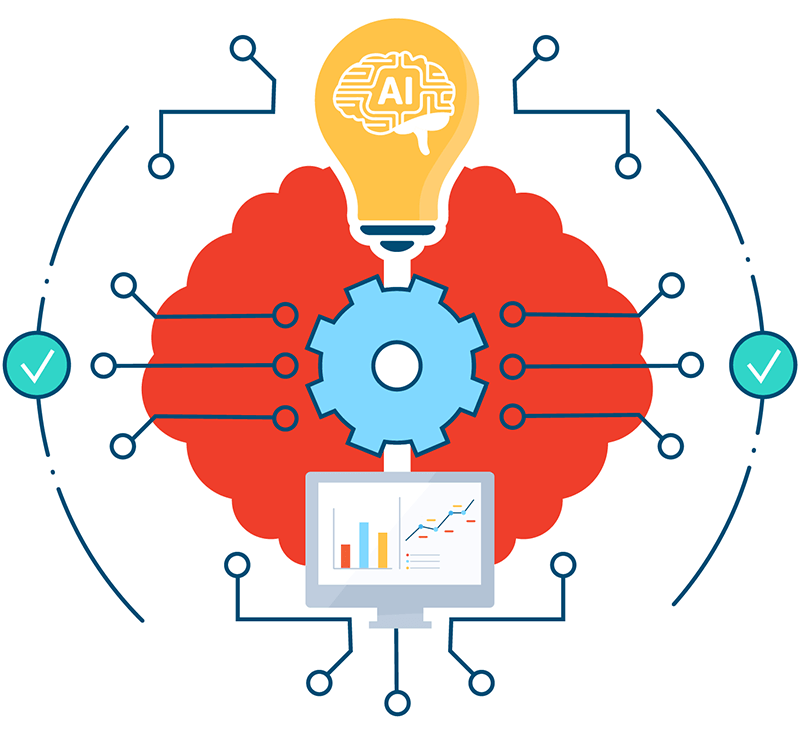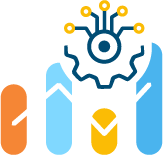
What constitutes an MLOps platform?
An MLOps (Machine Learning Operations) platform comprises a collection of tools, frameworks, and methodologies designed to simplify the deployment, monitoring, and upkeep of machine learning models in operational environments. This platform is a liaison between data science and IT operations by automating diverse tasks associated with the entire machine learning lifecycle.
MLOps platforms ensure the smooth and efficient incorporation of machine learning models into an organization’s infrastructure.
- Streamlined administration: The main aim of MLOps platforms is to improve the management processes associated with machine learning models, thereby optimizing overall administrative efficiency.
- Scalable solutions: MLOps platforms prioritize the development of machine learning models that can quickly scale to meet growing organizational needs, ensuring adaptability and flexibility.
- Quality and performance standards: MLOps platforms are dedicated to maintaining high standards of quality and performance in the deployment and execution of machine learning models, ensuring reliable and effective outcomes.
Notable features of MLOps platforms
Agile collaboration engine
MLOps platforms propel effective communication and collaboration among data scientists, ML engineers, and operations teams, fostering rapid innovation and decisive decision-making, harnessing an elegant collaboration engine.
Dynamic model evolution
MLOps platforms empower dynamic model evolution by facilitating the storage and management of multiple iterations of ML models. This comprehensive model version control encompasses code, configurations, and dependencies, ensuring adaptability in the ever-evolving landscape.
Sentinel model governance
At the helm of model governance, MLOps platforms act as sentinels, enforcing robust access control, compliance, and security measures within ML workflows. This vigilant oversight ensures transparency and adherence to organizational policies and regulatory standards.
Data chronicle mastery
Masters of data chronicles, MLOps platforms showcase robust capabilities in tracking and managing diverse datasets. This mastery ensures reproducibility and traceability in the dynamic realm of machine learning projects.
Automated ongoing integration (CI/CD)
MLOps platforms orchestrate the seamless building, testing, and deployment of ML models automatedly. This staged performance ensures updates occur seamlessly, reducing errors and enhancing the overall efficiency of workflows.
Experiment tracking
MLOps platforms facilitate systematic logging, comparison, and visualization of experiments, hyperparameters, and results, embarking on insightful experiment tracking. This tracking streamlines the model selection process, providing invaluable insights for informed decisions.
Scalability
As scale craft innovators, MLOps platforms support developing and managing ML models at scale. These platforms ensure adaptability and sustained growth by empowering organizations to navigate challenges posed by increasing data volumes and complexity.
Model monitoring
MLOps platforms track the performance of deployed models, detecting data drift and model degradation. Alert systems stand guard, maintaining model accuracy and reliability over time.
Model deployment
MLOps platforms simplify the deployment of ML models across diverse environments, whether in the cloud, on-premises, or on-edge devices, mastering the art of deployment. This deployment mastery streamlines the overall deployment process.
Model validation
MLOps platforms conduct rigorous testing and validation in quality assurance, ensuring that ML models meet predefined performance and quality standards before deployment.
Ecosystem integration
MLOps platforms are designed as composers and aimed for ecosystem harmony, seamlessly integrating with popular data science tools, libraries, and frameworks. This harmonious integration promotes compatibility with existing workflows and ecosystems, ensuring a cohesive and streamlined machine-learning process.
Benefits unveiled by MLOps platforms
Reproducibility and traceability
MLOps platforms empower organizations to uphold version control for data, code, models, and experiments. This crucial capability ensures that data scientists can effortlessly reproduce results, track model lineage, and compare different model versions, contributing to model sustained quality while adhering to industry regulations.
Governance and compliance assurance
MLOps platforms offer robust tools and processes for model governance, access control, and auditing. This feature ensures organizations can uphold compliance with industry regulations and maintain ethical and responsible use of machine learning models, establishing a foundation for governance and compliance within the ML ecosystem.
Facilitated collaboration
MLOps platforms serve as a centralized hub for ML project management, fostering collaboration among data scientists, ML engineers, and stakeholders. Equipped with communication, project management, and knowledge-sharing tools, these platforms break down silos between teams, facilitating smooth transitions across different ML lifecycle stages, ultimately leading to more accurate models and quicker time-to-market.
Elevated model quality and performance
MLOps platforms come with tools that automatically evaluate the performance of machine learning models. This ensures a thorough and impartial assessment, guiding improvements in model effectiveness.
- Hyperparameter tuning: These platforms simplify the optimization of model hyperparameters and fine-tuning configurations to enhance the accuracy and efficiency of machine-learning models.
- Performance monitoring: MLOps platforms include features for continuously monitoring deployed models, offering real-time insights into their performance and reliability. This ongoing assessment is crucial for maintaining model effectiveness.
- Consistent performance standards: The tools MLOps platforms provide ensure that deployed models consistently meet established performance standards. This consistency is vital for building trust in the reliability and accuracy of model predictions.
- Alerts for data drift and model degradation: MLOps platforms aim to detect and alert teams to data drift or model degradation instances. These alerts enable proactive measures, ensuring timely interventions to uphold the accuracy of the deployed models.
- Proactive maintenance and retraining: Armed with early alerts and insights, MLOps platforms empower teams to take proactive maintenance measures and initiate retraining processes as needed. This proactive approach ensures that models remain robust and effective over time.
Cost-efficiency
MLOps platforms automate various aspects of the ML lifecycle and facilitate efficient team collaboration, contributing to significant cost savings. These savings extend to human resources and computing infrastructure, optimizing resource allocation in machine learning projects.
Accelerated time-to-market
MLOps platforms expedite machine learning model deployment by automating key ML lifecycle processes, such as data preprocessing, model training, and deployment. This rapid deployment capability enables organizations to respond swiftly to dynamic market conditions and change customer needs.
Scalability solutions
MLOps platforms simultaneously support deploying and managing multiple models tailored for large-scale machine learning projects. These platforms seamlessly integrate with cloud infrastructure and harness distributed computing resources, scaling model training and deployment according to the organization’s evolving needs.
Meet on GitHub page OptScale – MLOps and FinOps open source platform to run ML/AI and regular cloud workloads with optimal performance and cost
OptScale offers ML/AI engineers:
- Experiment tracking
- Model versioning
- ML leaderboards
- Hypertuning
- Model training instrumentation
- Cloud cost optimization recommendations, including optimal RI/SI & SP utilization, object storage optimization, VM Rightsizing, etc.
- Databricks cost management
- S3 duplicate object finder




